Artists
We engage artists working across a range of media through our fellowship programme, events, commissions and exhibitions.
We engage artists working across a range of media through our fellowship programme, events, commissions and exhibitions.
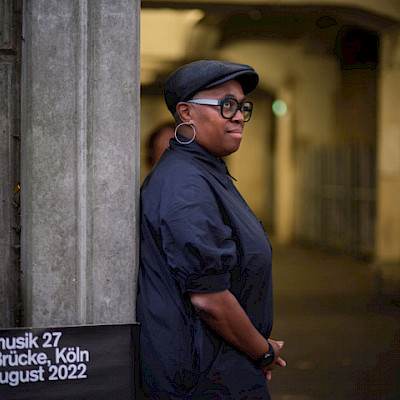
Ain Bailey was the second Cavendish Arts Science Fellow at Girton College.
Her practice explores sonic autobiographies and the constellation of sounds that form individual and community identities. Her compositions encompass field recordings and found sounds and are often inspired by reflections on silence and absence, feminist activism and architectural acoustics, particularly of urban spaces. She has developed numerous collaborations with performance, sonic and visual artists, creating multi-channel and mixed media installations and soundtracks for moving image, live performance and dance.
Previous work includes Oh Adelaide (2010), a collaboration with artist Sonia Boyce (Tate Britain, the Whitechapel Gallery, The Kitchen, New York); The Range (Eastside Projects, Birmingham); RE:Respite (Transmission Gallery, Glasgow); And We’ll Always Be A Disco In The Glow Of Love (Cubitt Gallery, London); Atlantic Railton within architect Sumayya Vally’s 2021 Serpentine Pavillion and as part of the Listening To The City sound installation programme; Version (Wysing Arts Centre); Untitled (Our Wedding)(CCS Bard, NYC); Trioesque (Bruckenmusik Festival, Cologne) and Remember To Exhale (2020) created with Ego Ahaiwe Sowinski (Studio Voltaire, London as part of their Desperate Living programme). She was commissioned by Art Basel Miami Beach to compose for the Soundscape Park.
Laura Buckley created several prints at the Cavendish Laboratory in 2016 that were presented as part of the Cavendish Arts Science Into Boundless Space I Leap exhibition in collaboration with Kettle's Yard.
Buckley (1977-2022) was an Irish artist based in London who worked expansively with moving image, kinetics, sound, light, sculpture and digital print. Working with scanned imagery, her prints feed back into projected videos which when combined with footage from her everyday life create highly abstracted environments of extramundane experience. On entering Buckley's installations a collective memory is evoked where various of states of mind are conjured and played out, from melancholy and anxiety through to celebration and euphoria. Combining footage and audio from life with studio produced sound and visuals, the viewer is taken on a journey through a composition of acts intertwining personal, structural, material and emotional associations and relationships.
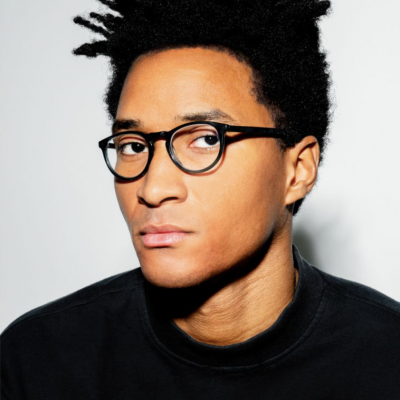
Logan Ryland Dandridge was the inaugural Cavendish Arts Science Fellow 2021-22, selected through an Open Call.
Assistant Professor of Cinema Studies at Virginia Tech (USA), in recent years his practice has centred around the creation of multi-channel installation video art. As a researcher, he explores ancestry, disapora and spirituality through an interdisciplinary art practice, developing themes of ontology and collective memory into an experimental continuum of fantasy, liberation and repose. As a filmmaker his work concentrates on the American South, as well as his own familial bonds, and employs a combination of video assemblage, electronic music and critical writing. He recognises John Akomfrah, Arthur Jafa, Audre Lorde and Octavia Butler as influential on his practice.
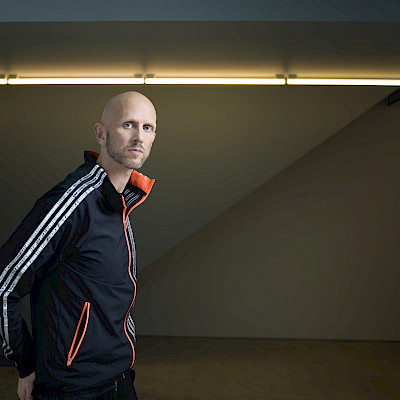
Wayne McGregor was commissioned to create a new work with Haroon Mirza Transverse Waves for Wayne (Solar Symphony 10) for the Cavendish Arts Science 2016 exhibition Into Boundless Space I Leap in partnership with Kettle's Yard.
A multi-award winning British choreographer and director, Wayne McGregor is internationally renowned for trailblazing innovations in performance that have radically redefined dance in the modern era. Driven by an insatiable curiosity about movement and its creative potential, his experiments have led him into collaborative dialogue with an array of artistic forms, scientific disciplines and technological interventions. The startling and multi-dimensional works resulting from these interactions have ensured McGregor’s position at the cutting edge of contemporary arts for over twenty-five years. He is Artistic Director of Studio Wayne McGregor, resident choreographer at The Royal Ballet, Director of Dance for the Venice Biennale, and is regularly commissioned by and has works in the repertories of the most important ballet companies around the world. He is in demand as a choreographer for theatre, opera, film and music videos and choreographed the highly anticipated ABBA Voyage concert. In 2011 McGregor was awarded a CBE for Services to Dance and in 2021 was honoured with a Lifetime Achievement Award at the Prix de Lausanne.
[Headshot by Pål Hansen]
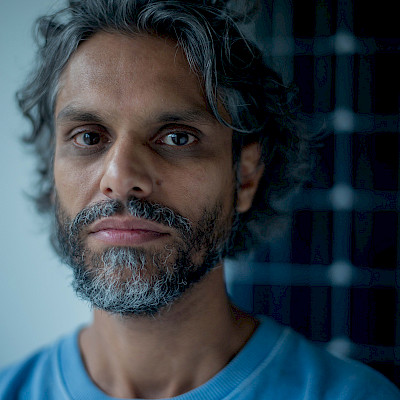
Haroon Mirza was commissioned to create a new work with Wayne McGregor Transverse Waves for Wayne (Solar Symphony 10) for the Cavendish Arts Science 2016 exhibition Into Boundless Space I Leap in partnership with Kettle's Yard.
Mirza devises sculptures, performances and immersive installations that have won international acclaim. Many of his installations such as The National Apavillion of Then and Now (2011) an anechoic chamber with a circle of light that grows brighter in response to increasing drone and completely dark when there is silence, test the interplay and friction between sound, light waves and electric current. An advocate of interference in the sense of electro-acoustic or radio disruption, he creates situations that purposefully cross wires. He describes his role as a composer, manipulating electricity, a live, invisible and volatile phenomenon, to make it dance to a different tune and calling on instruments as varied as household electronics, vinyl and turntables, LEDs, furniture, video footage and existing artworks to behave differently. Processes are left exposed and sounds occupy space in an unruly way, testing codes of conduct and charging the atmosphere. Mirza asks us to reconsider the perceptual distinctions between noise, sound and music, and draws into question the categorisation of cultural forms. "All music is organised sound or organised noise," he says, "so as long as you’re organising acoustic material, it’s just the perception and the context that defines it as music or noise or sound or just a nuisance" (2013).
[Headshot by David Bebber, 2021]
Eugenio Polgovsky Ezcurra (Mexico City, 1977 – London, 2017) began his career as a self-taught photographer working as he travelled through Mexico, Poland, the United States and Canada. He later studied at the Centro de Capacitación Cinematográfica (CCC) in Mexico City, where he specialised in directing and cinematography. He worked principally in non-fiction genres, shooting and directing numerous short films and made several long and medium-length films Tropic of Cancer (2004), The Inheritors (2008), Mitote (2012) and Resurrection (2016) for which he received more than thirty awards including the Joris Ivens Award at Cinéma du Réel, four Ariels from the Mexican Academy, the Coral Grand Prize at the International Festival of New Latin American Cinema in Havana, the Mexican National Youth Award, and the José Rovirosa Prize, awarded by Universidad Nacional Autónoma de México. In 2007 he founded the production company Tecolote Films and was the 2010 featured director at the Robert Flaherty seminar.
He was the first ever filmmaker in residence at Trinity College, Cambridge (2015-2017) and his experimental film Lightbyrinth (2016) was presented as part of the Cavendish Arts Science Into Boundless Space I Leap exhibition in collaboration with Kettle's Yard.
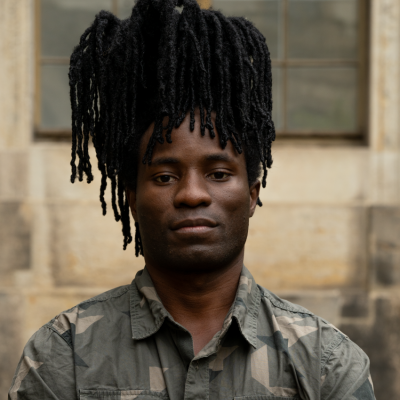
Ugandan contemporary artist, dancer and researcher, Robert Ssempijja, is the third Cavendish Arts Science Fellow at Girton College.
His compelling 'regenerative art practice' moves away from exploitative relationships at every level, making a bridge between the distorted past and the digital present through his creations.
Ssempijja has worked with choreographers including Christoph Winkler (Germany), Nora Chipaumire (New York/Zimbabwe) and Qudus Onikeku (Nigeria), dance companies and festivals across three continents, combining Ugandan traditional dance, breakdance and contemporary dance to develop new aesthetics and art forms.
His work draws on connections at a sensual and sensory level to explore things that spoken language cannot always explain, and that are too diffucult to talk about out loud. He explores the past, present and future in order to re-imagine traditional narratives, and aims to share experiences to take viewers on journeys of self-discovery while confronting decolonial questions about the nature of home and belonging.
Ssempijja uses movement to delve deep into the secrets hidden within our bodies, seeking to access new realms of information through the use of time, space and body. His work looks to reshape rhythms and redefine how we see ourselves, our community and our world.
More information: Artist statement
Mark Titchner (born 1973) is a London-based visual artist whose practice focuses on words and language. He makes work for the public realm both in the UK and internationally, often created from extended group activities, and was a 2006 nominee for the Turner Prize.
He was commissioned by Cavendish Arts Science to create a new graphic work for the opening of the Maxwell Centre in 2016.
 Back
Back